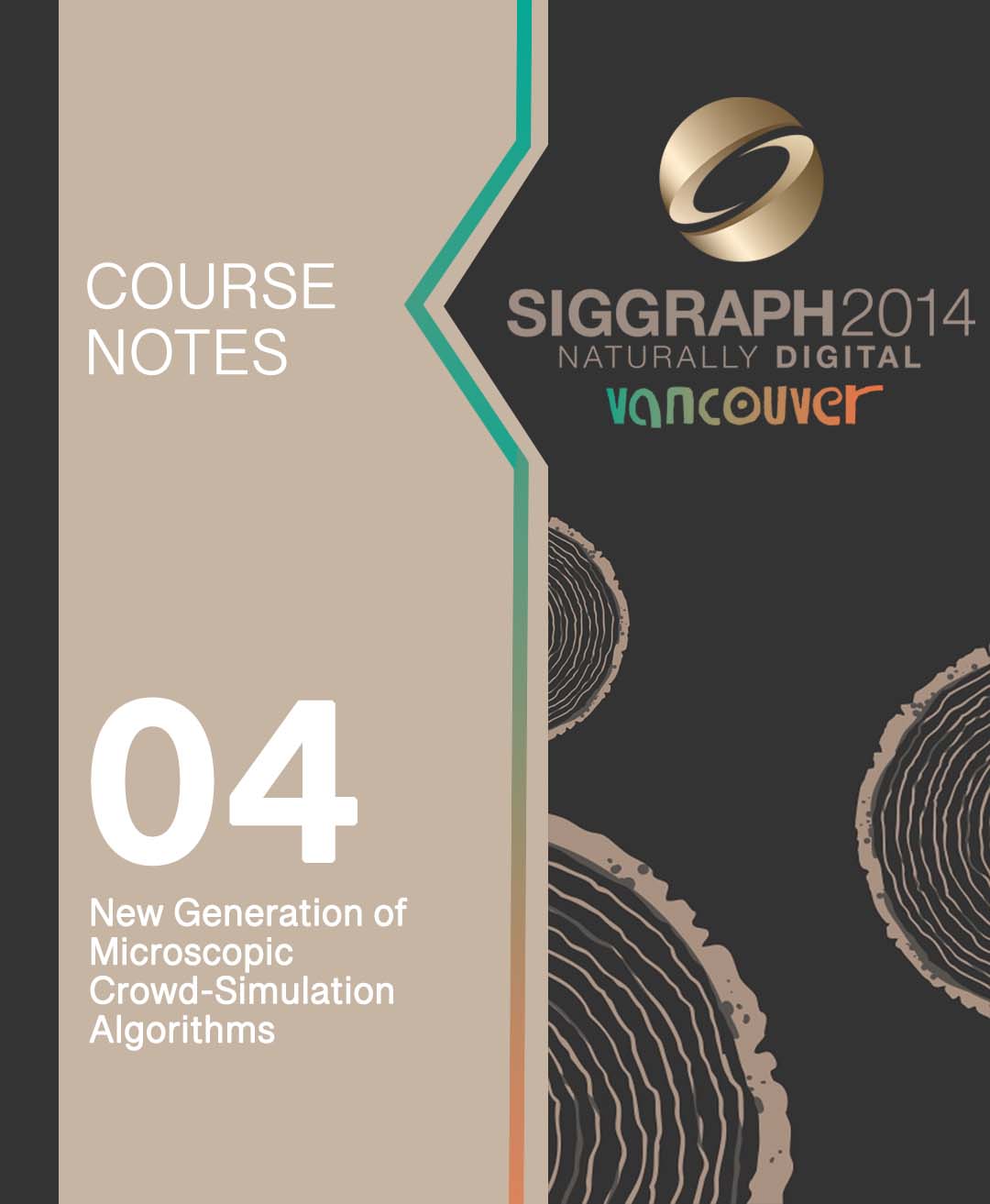“New Generation of Microscopic Crowd-Simulation Algorithms” by Pettre, Lin, Donikian and Mononen
Conference:
Type(s):
Entry Number: 04
Title:
- New Generation of Microscopic Crowd-Simulation Algorithms
Course Organizer(s):
Presenter(s)/Author(s):
Abstract:
Abstract, Audience, and Prerequisites
This course is mostly aimed at readers familiar with the use of crowd simulators and the design of crowd animations, but not necessarily familiar with the design and coding of crowd simulation algorithms.
Crowds for entertainment or safety applications purposes are most of the time simulated using microscopic algorithms. In contrast with other types of approaches, microscopic simulators are able to generate continuous and smooth trajectories for individual agents. They are based on models of local interactions between agents. The crowd motion result form the combination of all local motion and interactions. The fact that the resulting crowd motion is emergent makes difficult anticipating the simulation results.
Many motion and interaction models have been proposed to design a plethora of simulation algorithms: force-based models, rule-based models, coupled or not with flow-based models, etc. Each type of interaction models will actually result into specific crowd motions as well as agents trajectories. Unfortunately, not all have the desired properties: oscillations, jerky trajectories, residual collisions or deadlocks are often observed in simulations.
From this point of view, this course presents the many recent progresses in crowd simulation algorithms since the introduction of velocity-based algorithms, as well as the impact on the level of realism and the visual quality of simulated crowd motions. It also presents the impact on various kind applications.
The class is structured in 3 major parts. The first part provides a definition of microscopic models of simulation, and presents the main types of solutions that were proposed in the literature. More specifically, the velocity-based algorithms are explained and situated with respect to other kind of approaches. The second part is a more technical one and presents a family of popular solutions based on the principle of Reciprocal Velocity Obstacles (RVO). Finally, in a third part, the course shows how this new generation of algorithms is practically used in the fields of safety, movie industry as well as interactive entertainment.
With a 3-part structure of the course, we expect interesting a large audience at SIGGRAPH: the theoretical, technical and practical aspects of crowd simulation are addressed. The long A focus is given to velocity-based approaches. All the lecturers provide an as pedagogical as possible presentation of the most theoretical and technical aspects of the course to make it accessible without specific prerequisites. The large part of the course dedicated to applications enables presenting numerous examples of practical use of most recent algorithms. The structure of the course is detailed below.




